|
We are leaving the wilds…"farewell wild beasts, its been amazing." But as Arnold always says, “I’ll be back.” However, we are not leaving the adventures. Leaving Kruger we head to Hazyview where we are staying at a timeshare called Waterberry Hill just outside the town. After settling in, toasting the sun that dips into the valley below us where a pair of rogue elephants, as we find out later, have escaped for a drink too, I retire for the night. I’m in the shower…and it’s attached to our accommodation, that’s a treat, and I look down at my feet. They tell a story. The soles are dirty brown and the heels are cracked and dry. I've tried occasionally to put Ingram's lotion on them - I've tried to scrub them, yet they remain irresolutely the same - dirty, cracked, and dry. They are testimony to our months of adventure - wild outdoors - no shoes - no calendars - no worries! The modern conveniences are great, but I still love the great outdoors more. 🍻 Here's to dirty feet! 🍻 Today we have an adventure of a different kind planned - not wildlife, but wild times! “Hi I'm Dirk, and this is Richard.” We have arrived at a farm near Hazyview in excited anticipation of our first off-road Segway experience. We've seen these self-balancing scooters in shopping centers - in movies - on the beachfront - and always wanted to try them. But what really appeals to us is doing it off-road. Six alien looking contraptions are lined up awaiting their pilots and soon Richard is explaining how they operate. “They balance themselves,” he says standing atop one of the two-wheeled contraptions. He demonstrates how to operate the Segway. “Who's up first?” he asks. I quickly volunteer, keen to get as much time possible in this experience. “Whoa…that's so weird,” I say as I navigate my Segway tentatively for the first time. It just has two wheels - it shouldn't stay upright - but it does. Lean forward and it goes faster. Lean back and it slows down. Tilt the handle and you turn on the spot. Soon we are all turning and twisting and scooting around like some alien dance scene. “OK, follow me,” Richard says, as we wave farewell to Dirk and head down the farm road. It's the most amazing feeling. There's no roar of an engine, there's no effort required, yet you're flying along the road. In fact these machines can get up to 30km/h, but at the moment we're just gliding along slowly. “These are Macadamia trees,” Richard says as we stop next to some small trees. He then goes on to explain the workings of this farm and the fascinating story behind the macadamia plantations. But the strange part is that we're just gliding along as though we're perched on some invisible conveyer belt. We pass through plantations, past lakes, beehives - “Those are for pollinating the nuts,” Richard says a safe distance from the busy hive. I never realized you needed bees to pollinate these trees. We've done a lot of amazing experiences on our travels - paragliding, swimming on the edge of waterfalls, mokoro trips with hippos - and there's one thing I've learned and that is it's always more than the activity itself, it's the experience. The same applies today. It's not just the strange, effortless, flying feeling of being on the Segway, it's the experience - the beauty of this lovely area and learning about the plantation and farming. “Ok everyone, on this straight portion you can all go as fast as you want,” Richard says. Aah..finally we are set free. Josh and I lead the pack as we fly along the road. It truly feels like skiing. You're standing upright and you can sway your legs from side to side to create a weaving motion. The trees rush past me. “Yeehii,” I shout as I soak up the thrill of my “African bush ski experience”. Epic. We stop next to a dam for a short break and while sipping bottles of water Richard explains how he's been swimming in this dam for ages and now discovers there's a crocodile living here. Gotta love Africa. “There's two options here,” Richard says, “the easy route or this more technical but interesting route. Which one do you want to do?” Come on…what a question. We want to do the trickier, technical route. Bring it on! It is amazing what these segways can do as we maneuver them over ruts and rocks and beneath low hanging trees. Soon we are back on the normal track and skiing along around the final block and down towards Dirk and the end. “Wow!”'I say as we arrive, “this is truly amazing Dirk. Skiing in the African bushveld. That's what this is. Epic!” Dirk's Segway Africa Tours just recently started and I'm convinced it's going to be a huge success, especially as he goes on to explain his future plans - Segway safaris in a game reserve, moonlight tours, sundowner tours. It's amazing as it is - imagine doing this in a game reserve watching wild animals and finishing it off with snacks by a waterhole. “We definitely will be back!” we all chorus together as we bid Dirk and Richard farewell. “Definitely!” I mean, who wouldn’t want to ski effortlessly along the stunning, wild roads of Africa?
Comments
Leaving Kruger we are headed for a farm outside of Hoedspruit, “Little Cathage” in the Ndlovumzi Nature Reserve. Turning off the easy-driving tar road we hit a rugged gravel road that apparently will lead us to where we are staying. As we are bounced around and the road continues our anxiousness increases and we prepare ourselves for another rustic experience. Heather, our hostess meets us and leads us up a short path to where we are staying. All our qualms and reservations instantly vanish. Two cottages connect to an outside dining area and kitchen before flowing on to a huge deck with sunken pool giving way finally to a river below, made even more majestic by the setting sun. It's a stunning setting and we are now excited to be spending several days here. Time to work, read, write, learn, reflect…experience. Africa…always surprisingly amazing. While our accommodation is tucked away deep in the bush, at the end of a fun 30 minutes of bouncy gravel road, there is lots to see around here. So we find ourselves bouncing along the road towards Hoedspruit in search of places to explore. “There's the sign,” I say pointing at a small sign on the side of the road saying “Jessica Hippo” which Heather had recommended. It's another 10km gravel road to reach Jessica Hippo and I recall that once before we abandoned the idea of traveling so far just to see a hippo. However this time, as hardened travelers, we persist, and its going to turn out to be a good decision. We are greeted by a small hippo just behind a low wooden pole fence. “Wow, cool. Jessica the hippo,” we say in excitement at seeing a small hippo up so close. It turns out we're wrong. This ain't Jess…Heading down towards the river a video presentation has just begun. It's a video made about the world famous Jessica the hippo by an Australian TV channel. We learn how Jessica was discovered by the farmer/game-ranger and his wife. She was premature and washed up in a flood. They then cared for her and an amazing, unique bond developed. They swim with Jessica, ride on her, play with her. She comes into the house, wanders around the garden…but in all this she is still free and wild. She goes out and visits other hippo pods in the river but always returns to her home with them. It truly is remarkable. Soon we have a chance for an up-close encounter with her. Jessica is massive. She is now 15 years old. We are standing on a floating pont and Jessica rises out of the water and places her huge head on the side of the pont causing it to tilt. “All you do,” explains Tonie, Jessicas dad, “is grab some sweet potatoes, stroke Jessica's snout and then drop the food inside.” It sounds simple until you see how huge “inside” is. Kneeling down I grab a handful of tasty hippo treats and then stroke Jessica's massive hairy snout. It feels like a broom. She opens her mouth as her eyes languidly consider me. It's a massive cavern. As the TV presenter said, “it's like feeding a dinosaur.” Large tusks protrude menacingly from the massive open maw before me. I toss the snacks into the depths and Jessica closes her mouth, as I quickly withdraw my hand. It truly is amazing to be up close to such an incredible animal. It's referred to as “Africa's biggest killer” yet amazingly she is so content and peaceful with humans. Later the girls get a chance to kiss the hippo on her hairy snout…I suppose to make them appreciate the smooth kisses of boyfriends and husbands. The other hippo we saw earlier turns out to be a recent rescue. This one, called “seun” was also rescued and is to be released into the wild soon. After a visit to one of the world's oldest baobabs followed by delicious craft beer, a mega burger and spectacular rugby at The Gap pub - with a good Springbok victory thrown in too - we head homeward bouncing once more along the dirt track - but somehow in the dark and with the glow of victory the road flies by and soon we're back ensconced in our aircon room ready to dream of hippos and springboks. “One, two, three, four….all the limbs are still there.” I peer over to the inert form of Nicky next to me in the tent, I think she's all there although she is still wrapped in her sheet. That's good news no lions…and no lie ins. The birds have woken me before sunrise to a new day, our final day at Tuli Camp in Botswana. It's been an unbelievable experience through Namibia, Zimbabwe, Zambia and Botswana, and now two months later we are leaving and going back to South Africa. With efficiency honed from so many pack-ups, we have our site miraculously spirited away into and onto Pajey within an hour and a half - that seems to be the new standard. It's our last tent pack up, and although we loved it, looking around I'm not seeing tears in the family's eyes. I think the girls are tented out and keen on some sophistication - although they'll have to wait a bit for that. We leave Tuli camp and head along the dirt 4x4 track towards the Pont Drift border post which is the northern most border in South Africa. It's also the most fun border as there's no one there. We sail through a friendly Botswana border and then drive through a dry river bed to get to South Africa where we are welcomed with friendly smiles into SA. “Aah, it feels good to be home.” Even though we are just on the tip of SA, there is something about home - even with all its problems. This is my country. Here I'm not a foreigner. These are my people - black, white, striped…whatever. We’re headed to Mopane camp in northern Kruger Park. It's a short drive and we arrive at the Punda Maria gate - one of the most northern gates of Kruger. One of the things we have had to do countless times on our trips through other countries is have our car searched. This normally involves opening the back and in most cases opening the fridge or having them scratch through our drawers. We thought this was behind us. But Kruger has decided to get in on the act too and so once again they want to see the back of the car…“Eish!” he says when we open it and he sees how packed it is. He gives up but pokes his head inside the car, there discovering kids. Not sure if he was expecting to discover hunting rifles, tanks, severed animal heads sitting packed on our seats…but we are waved through. We spot elephant, buffalo, and various buck as we make our way towards Mopani Camp. We stop a few times en route and also once again cross the Tropic of Capricorn. The last time was driving in Namibia from Sossusvlei to Ludertitz. It's fun passing these landmarks and we all leap out again to take the requisite photos. “What's with all the people?” I ask as we pull up at Mopani camp. “Oh yea. It's holidays!” We don't like it when it's holiday time as people appear. They should stay at school and not clutter up our holiday spots….but there is one benefit of lots of people…rugby atmosphere. Rugby is one interesting theme of our travels. It's not that we have seen a lot but we have been able to “watch” games in some unusual places. We watched the boks get hammered by New Zealand while sitting freezing outdoors at a pub at night in Franschhoek - thanks to load shedding. We watched Twitter and Whatsapp updates as Japan beat the boks in their opening World Cup game while seated outdoors on the banks of the Chobe river in Namibia with elephants just across from us. We watched the boks beat Samoa in a hotel room in Botswana just after an incredible sunset boat cruise. Today we're packed into a pub at Mopani camp in Kruger preparing to watch the boks play Scotland while outside the sun sets over a dam packed with elephants, crocs and various buck. This is how rugby should be enjoyed…even when it goes bad. Now for a beer! What a game! What an atmosphere. The boks manage to pull off a great win. The highly vocal Afrikaans crowd created a great atmosphere as about one hundred people sweated, literally, as we packed in together to enjoy the action. The stars are sprinkled liberally across the ebony night sky as we walk back to our unit. It's a stunning evening and as we enjoy our meal outside soaking up the remnants of the day, the hippos grunt in agreement. I love South Africa. We’ve left the excitement of Zambia’s Devil’s Pool and the majesty of Victoria Falls behind and headed back into Botswana in search of adventure. We’ve lived in some quite rustic spots lately, and so we are doing a civilization reset with a couple of days staying at the Mowani hotel in Kasane…Eish! Hotel! That’s a first for us on our trip. Electricity, own bathroom…with running water…aircon…paradise. “I think we should go to Chobe,” Nicky wakes me up dissolving my vision of a sedate day at the lodge. She's right. We are all the way here, let's do it. The girls opt for aircon and pools and Nicky, Josh and I head out to explore Chobe. After parting with about R400 - that's costly for just three people - we enter the park in search of the big game. However, it's not the big game we're expecting that we will find. We see lots of kudu, elephant and some amazing bird sightings. However the “big game” is avoiding getting stuck. The roads are Mozambique-style roads - thick and crazy sandy. We spend more time plotting routes and approaches than looking for animals. After engaging everything including low range and diff lock we decide to take a direct road back. This turns out to not be a good idea. We had thought because the road was not along the river, like that previous road we had been driving, it would be better. We are wrong. It's worse. Very thick sand and hilly. Nicky closes her eyes as we approach a particularly daunting hill ahead. I put foot giving Pajey full torque. We slide and slither up the thick sand. “Oh no!” I say, which causes Nicky to open her eyes. A vehicle is coming down the track in the opposite way. “You don't move,” Nicky yells. So I hold my course refusing to budge off the road in the hope that he will try and drive off to the side into the even thicker sand. He's going nowhere either. He knows he will be stuck. Eventually as we are nearly on top of him and he's fishtailing towards me I pull to the right…and immediately come to a grinding halt. To say that Nicky is not particularly enamoured with me is an understatement. However all is not lost. I am able to slowly reverse backwards down the track while Nicky gesticulates furiously at the other vehicle making it clear they must move aside. Eventually, he decides to move aside rather than face the glaring Nicky, and with a lot of scary sliding he manages to get slightly off the track. Giving Pajey full throttle again we slither and slug past him finally making it up the hill. It's a long drive…or at least it feels that way with us not relishing the thought of getting stuck and having to dig ourselves out in 40c heat with wild beasts everywhere. Thankfully we make it and are soon cruising back homeward bound on a tar road again. Josh has loved the whole experience and wants to do it again…but I fear his mom is not that much into 4x4 adventures. We have decided to do a cruise on the Chobe because it is famous for its amazing elephant sightings. Grabbing our snacks we are soon seated on the boat by 3:30, grateful that it has a roof to protect us from the sun. The river is glass smooth and we enjoy some magnificent sightings of elephant - close up. As they beach the boat, so we can watch an elephant close by on an island, it decides to walk right up to the boat and then into the water. It's magnificent being so close to them. Later we see more elephant crossing the river with a small baby in tow. The baby literally vanishes under the water, with its trunk popping out of the surface every now and then for air. Somehow it makes it, cooled down and faithfully following mom. After witnessing another unforgettable sunset over the river, we finally return home. The boks are playing again, and this is one of the few occasions we have a TV - in our own room. They had better not let us down. Thankfully they don't as they hammer Samoa. Now that was fun. Lying in the cold aircon room we let the sweet call of sleep claim us. It's our final night of luxury. Aah, enjoy, tomorrow we're on the move again as we begin to head south, towards home. Leaving Ngepi behind we now push further into the Caprivi Strip towards Camp Chobe, our final destination in Namibia, right on the border of Namibia and Botswana. Soon the long drive, the heat is behind us and we are setting up our tents on the edge of the Chobe river. As our fire crackles and the white wine clinks in the silver goblet we are treated to a most amazing HD show. A herd of elephant come down to drink at the river just 50m in front of our camp. And in the distance behind them a massive herd of buffalo is on the move. It's so large that a huge dust cloud hangs over them. As the sun melts away behind us we enjoy our evening meal and look forward to spending our last few days in Namibia on the edge of this beautiful savanna. Did I say we had left the heat behind? It seems not. As we crawl into our tents at 9:30pm the heat does not abate. I haven't been this hot in years. I hope we will sleep. I doze…I must be alseep, I think? "Dad! What's that noise?” I awake…I was asleep. But no more. The heat is oppressive. “Dad, there's something making a noise in the kitchen area.” I listen. There is something moving in the kitchen. I shine the torch from within the tent but can't see what it is. “There's a noise outside our tent too,” says another worried kid's voice from their adjoining tent. “There!” says Nicky in a muted gasp. “An elephant!” As I peer out our tent I see a large dark form walking past the front of our tent. It's huge this close up. The kids are in a panic as more noises around the tent signal the presence of the herd. We convince them to stay quiet in their tent. We all wait. What's the elephant done in our kitchen area, where we heard it earlier? Will they leave our tents alone? Heat…silence. A low rumble. The elephants are still near. Heat…silence. In the morning, as the sun slowly paints the land in colour chasing the darkness away, we arise to see what the elephants did. Besides on chair that has toppled over, there is no sign they have been here, besides their huge tracks all over our campsite. After a quick filter coffee to wake us fully to the day we head off to the lodge where we are scheduled to go on the Canadian Canoe Safari. We walk down to the river and are soon in three canoes with our guides, Nelson, Andrew and Anton. I've never tried a Canadian Canoe. They are basically a “normal” canoe but someone forgot to tell the Canadians that a paddle can now have two ends. So the poor fellas have been canoeing on one side then the other all these years. However it turns out to be really easy - well especially when I let Andrew, who was our guide, do most of the hard work. The river is really low, compared to the rainy season when this entire plane is flooded. While this means that the motor boats can't travel it makes for fun on the canoes. The river meanders like a drunken snake through this true African landscape. However, the wind starts to blow. This is a true African savanna after all, that's what you get. To me, it adds to the ambiance as the dust rises and swirls above a huge herd of zebra who are crossing from Namibia to Botswana. We pull up our canoes to watch the zebra and they look warily at us. “We're going to walk to our snack spot from here,” Andrew says, “to avoid paddling through the dust.” And so we walk across the open planes towards a copse of distant trees. Andrew and Nelson start an impromptu game of soccer as they walk...with a ball of elephant dung. This is soccer Africa style. When we arrive we are greeted by Amy the manager of Camp Chobe and she has set out a table with some welcome snacks. “I'm sorry about the wind,” she says, “but I've tried to position the Cruiser to protect us.” We don't notice any wind. We are just enjoying the vast splendor of Africa's hot open savannas enjoyed appropriately with a Savannah Lite in one hand and a tasty snack in the other. The canoe back is easier as the wind is mostly behind us and the guides keep the children active by testing them on the various birds we have been seeing. “What's that?” Andrew calls to the girls in the other canoe while pointing at a black and white bird. “It's an Openbill lapwing,” says Hannah creating a new bird, before settling on “No, I mean a Blacksmith lapwing.” We might never be bird experts but at least we are slowly learning. Arriving back at Camp Chobe and the day is now really hot. We spend the afternoon enjoying a mixture of swims, drinks and working on our devices in the lovely lodge lounge area. Finally as the sun heads towards its duty to wake the Aussies, we relax at our campsite once more toasting a beautiful day in Africa while the smell of our curry cooking mingles with the ever dusty smell of Africa. It's our last day in Namibia. It's been an incredible country to visit. Encapsulated in our tents as the night comes alive with the sounds of the wild we watch a David Attenborough show on Africa. The amazing part is that he visits all the places we've just been to. Now it seems so much more real, especially watching it in the heart of Africa's wilds. Sleep beckons. “What adventures does Africa have in stall for us tonight?” I wonder as David's soothing voice pulls me towards sleep, “And so the zebra move across the vast dry planes of Etosha in search of water, hoping to….” Zzzzzz For more information on Camp Chobe in Namibia, see here! For more information on Ngepi Camp check it out here! We’re en route to Ngepi in the Caprivi Strip, leaving behind the hot and dry planes of Etosha. The road is tarred, which is great although the wind which has turned the sky into a grey dusty blur continues. "Oh to see the sun again," I think to myself as we drive. I can't remember what blue looks like. Here's hoping the wind lets up before we reach Ngepi. As we turn down the dirt track for the last few kilometers to our destination we begin to wonder what we are in for. Various signs mark the 3km dirt track as we bounce along towards our destination, such as, "All 4x4 drivers engage four wheel drive, diff lock, low range and cross your fingers. All other drivers continue driving as normal." The humorous signs continue giving us hope that this could be a great camping spot. Finally, we arrive. We leap out of the car in anticipation. We're greeted by an amazing looking reception area. An open, thatched area which houses the reception and pub flows onto a lawn - grass - 🎶🎵 - and from there to a deck set on the edge of a huge river, part of the Okavango Panhandle. Wow! We've never seen so much water and lush tropical forest in Namibia. Wow...did I say that already? Soon we are headed to our campsite which is close enough to walk to the bar area - important - but far enough away to be private. It's on the edge of the river and surrounded on all sides by trees creating a private, shady and grassy 🎶🎶 campsite. Wow...OK, I'm overdoing that "wow", but it is. The sound of birds fills the air mingling with hippos grunting in the river. Ngepi Lodge is full of character, as the funny signs hinted at. The toilets and showers are another example. All the toilets are open air toilets surrounded by pole fences. But they are amazing - flushing toilets with basins and mirrors, set in stunning surroundings. As we explore we find a closed area with a sign saying "Ladies please remain seated during the entire performance". We enter to see what is inside. I'm wondering if it's a lapa for shows. It's not. It's another toilet with trees growing all around it. As our campfire crackles on the banks of the river the evening silence is punctuated by roars - not lions but hippos. The ground almost shudders as their roars reverberate through the evening air. What an amazing place. Let's just hope the hippos don't decide to graze on us and our tents as we sleep tonight, because there's nothing between those roaring beasts of the river and us besides a few millimeters of fabric. Africa...only in Africa. "I'll make some coffee," I mumble to Nicky as the early morning light seeps into our tent. It feels like I'm sleeping in a tropical jungle because outside the birds are welcoming the new day with a chorus of song. However, there's not going to be coffee...not yet at least. "You have to come and see this," I call from outside where I've gone to turn the gas cooker on. Nicky emerges and we watch a fiery ball of orange slowly lift its huge bulk above the trees across the river. It reaches out towards where we are standing on the river bank with a golden finger as though beckoning us to experience the adventures of the new day. Sipping filter coffee while enjoying the slow rhythm of the river as it slips by, we watch a herd of buffalo come down to drink. As the day warms up quickly we decide to go and try the "World's first hippo and croc cage dive”. It's a floating swimming pool suspended in the the river. As I dip my feet in the scary feeling of what lies below the dark brown water tingles my spine. Eventually I throw caution to the wind and leap in. It's dark and eerie but deliciously refreshing as I burst out the water as quickly as I plunged in. Negpi is not just about the beauty of this tropical, desert oasis, it’s about sustainability too. We have heard from Mark, the owner of Ngepi, that he wants Ngepi to be “the most environmentally friendly camp in the world.” And so we head out on a tour with Rob, the manager, to see what they are doing. "We are 100% solar," Rob says as we look at an array of solar panels in a field. He shows us a building that houses banks of batteries that provides all the power for all the campsites, chalets, etc. Amazing what we can achieve from the power of the sun. I have never been to a place where the ablutions are such a feature. You want to go to the toilet or have a shower, just for the experience. Every one of these is different, and even these tell a story. We arrive at two showers set side by side. The signs indicate one as "Today" and the other as "Tomorrow". "Today," says Rob as we enter the shower, "is lush and tropical." Inside there are trees and the shower has been integrated into this natural beauty. "However," continues Rob as we exit "Today" and enter “Tomorrow". “Tomorrow is not going to be good if we continue treating the earth like we are!" Inside the shower is barren. Concrete. No trees. A painted tin saying "toxic waste" and no hot water - which Joshua found out when he went to shower there. I’m impressed. Who would of thought of even using your ablutions to teach important lessons, while making them so much fun. Rob continues to explain various other projects Negpi is involved in like the wood project to stop deforestation of the area, the tree project to provide income and help re-establish decimated areas, the recycling plant, the organic vegetable garden, and more. By the end of the tour, I’m not only convinced Mark’s vision is achievable, I’m exicted about it - because he’s managed to not simply try create an eco-sensitive camp, but care for the local community and educate visitors too. Tomorrow we will be doing something totally different. Totally crazy, we’re going to get up close and personal with the river… (to be continued) We are on our way again and headed to the famed Etosha. Etosha means “the great white place” - and you can see why. Everything is covered in a fine layer of white dust. Even the animals. The zebras are more like albino zebras. The trees look like they’re covered in snow - except for one thing. It’s over 40c! It doesn't take long before we see what this vast open white barren landscape offers. Huge herds of animals clustered around the meager water supplies or huddled under the pitiful shade offered by the tiny trees. We pull up at a dam and hundreds or springbok, zebra, giraffe and wildebeest are standing languidly around the pan. Impressive. We never see such vast numbers of animals in South Africa. Within an hour our list includes springbok, zebra, giraffe, wildebeest, oryx (aka pie bucks), jackal…and then…lion! They are right on the side of the road and we pull up next to them. They fix us with their beady golden eyes and I recall the recent incident where lions ate a tourist. There's a thrill being just a meter away from this amazing animal. We snap millions of photos as we soak in the sight. A little later we come upon Etosha - literally. A herd of elephant who are white with the dust of Etosha. Spectacular. The sightings are amazing but we must get to our campsite. So we head towards Halali campsite. Here's hoping for green grass and shady trees. “Eish!” we exclaim as we arrive. White dust swirls in the wind while the oppressive heat strangles everything in a constricting tourniquet. We look at this and wonder how we will put up our tents in this harsh environment. Should we wait till its cooler? Finally we decide to bite the bullet…or dust, and just do it. We crack open a beer and within 45 mins we have setup camp and are headed to the pool. As the sun sets we head to a waterhole at the campsite. It's like a movie theater. Loads of quiet people are seated staring out at the waterhole. We find a secluded rock and are soon sipping wine and watching God's imax as the fiery African sun sinks in red and orange splendor into the dusty horizon. The small waterhole turns gold as birds twitter excitedly welcoming the cool. It's like the end of a battle. A battle between light and dark - heat and cold. The earth relaxes. It breathes a sigh of relief as the sounds of the evening fills the air like a celebration of the end of this war. Tranquility. Peace. Bliss. Our first night in Etosha was great and we awake feeling refreshed. The night chilled considerably ensuring that we had a great sleep. While the nights are cool the day quickly warms and we decide to go and check out the pan attached to our campsite. We are treated to black faced Impala, that only occur in this area. After soaking up the sights and ambiance of the waterhole we head out on a game drive in search of game. Alas it's not as successful as our experience yesterday. We bounce along the corrugated roads for about two hours but don't see much. “I think we should head back,” someone wise suggests and we all agree. We are hungry and the animals are on vacation. Back at the camp we satiate our never ending thirst and hunger pangs and leap repeatedly into the pool to cool down. It's a great way to spend an afternoon. Laptop + pool = Productive Work. The only issue is the internet here is like sucking triple thick milkshake though a hollowed out piece of dental floss…Painfully slow. We return to the waterhole at the campsite. This evening we are treated to a rare sighting - three black rhino. I haven't seen black rhino in ages and it's a treat to watch them, of course made even better with a crispy white wine.A cloak of clouds is spread over the sky which is acting like a duvet cover for the land and not allowing the heat to escape. “Hey look at that rhino,” I whisper in a muted voice to the kids, “is that something coming out its butt? Is it having a baby?” We all look carefully trying to see as the orange light of the spotlight casts an eerie, dusty color on everything. The one rhino does seem to be separate from the other two and acting strange but it's hard to see for sure. So we decide to wait…and wait…and wait. Eventually the rhino moves off into the bush and although we can hear it we can't see it. Wait…wait…silence. The only sound is the occasional crashing of rhinos moving in the darkness. A small rabbit tentatively drinks water from the hole. A black backed jackal scurries past. A female kudu, obviously startled by something bounds into the light only to go bouncing off again into the darkness. Wait…silence. Stars. That's great, at least the duvet cover has lifted. 11pm. Wait. Silence. Eventually at 11:30pm we call it quits. Was that a baby rhino? Did she have it? Maybe we will find out tomorrow? Africa's story is always being written. For now we will sleep and await her next chapter tomorrow. As the camp stirs in preparation for the day the sounds easily penetrate our tent rousing us from our night's sleep. “Let's go to the waterhole,” Nicky suggests. So we get dressed - which here in the wild is simple - switch pajamas for shorts worn yesterday, shirt is already on, and you're done. However there is no sign of the rhino. We're expecting great things today after the nearly-maybe rhino birth. Yesterday Nicky was gifted by the blue bird of happiness. Joshie had pointed out the blue birds all around us - starlings - and a few minutes later one deposited it's load on Nicky, shaking it's butt to make sure everything was out. With this direct gift from the blue bird of happiness surely some great thing must be coming, and we are in for a treat we will soon find out. We head out and are soon questioning the wisdom of our decision. The roads are trying on vehicle and driver as we bounce over ruts and corrugations. The sky takes on its dark hue as the rising heat mingles with the white dust.Etosha is all about the massive 120km pan that for most of the year is dry. We've skirted the pan but we are now on a road that takes us out into the pan. The road ends and we get out of the car. White. Endless white stretches out merging in a blurry line with the white-dark sky. It's eerie, amazing, stark, endless. If you walked out there you would soon be lost in a void of featureless white. Chatting to a ranger we find out that a baby rhino was spotted.Could that be the end of our story? The heat drives us back into the car and we decide to head back via one last waterhole. As we come upon the waterhole we are treated to an amazing sight, or as Nicky says, “This was the one thing I really wanted to see in Etosha.” It's two elephant bathing in the pan. We sit watching them wallow in the cooling water at stages almost completely submerged before they reappear again. These huge beasts know a good thing when they find it - and now that we've had Nicky's bluebird it's time for us to take the hint from them and retreat to the cool of our waterhole - the swimming pool at the campsite. As the sun begins to set we head to our spot - the waterhole. A fiery ball muted by earth's dusty mantle. The water turns to polished gold. A lone rhino. She rubs her leathery hide on a worn log. From white to black She emerges from the golden liquid. Zebra approach. Cautious. A snort. A heavy foot falls. Dust rises in warning. They drink. Silence. Suddenly galloping hooves. Dust. A lone rhino. Doves flutter in unison with their mirrored twin. Silence. The earth waits. Her breathe held. He emerges alone. Seemingly birthed by the violet darkness. A deep rumble of excitement. He races towards the water’s silent offer. His mother following rumbles her displeasure. More arrive. Large. Small. The glass is shattered by dipping trunks. Thirst is satiated. Africa's dusty mantle washed off once more. As silent, as swift, they are gone. A lone rhino. Finally even color departs. A silent vigil. The earth sighs. Alone. Rhino. Swakopmond has been luxury. Great accommodation and the best coffee we have found since our favourite coffee spots more than 2000km away in Franschhoek, South Africa. But now it's time for the wilds again, and now we are headed to Spitzkoppe, a relatively short two-hour journey, although as always it includes 40km of gravel road.
It's 3:30pm when we arrive at the Spitzkoppe campsite, and the mercury is a whisker below 40c. This place must be torture in summer. Huge boulders rise above us…the Spitzkoppe I assume. Nicky leaps out to find out about where we are camping. We're in for a surprise. The campsites have no water, no electricity, and open-air long drop toilets. Eish! In Richtersveld we were expecting it…but this has taken us by sirprise…plus we’ve just come from the flat-white, air-conditioned luxury of our last place. Nothing like brusselsporuts after icecream - Hmm, not sure that analogy works as I prefer brusselsprouts to icecream, but I’m sure you get the idea. We drive to check out the sites. They're right. There's nothing. There’s only one thing we can do…go to their outdoor pub! Beer, soaking in the outback environment and all feels good. We're also welcomed by two very friendly and very tame meerkats. It looks like these little fellas could add lots of fun to our experience here, but now we need to figure out our sleeping plan before it gets dark. There's a covered shadecloth area next to a huge towering boulder. We decide to forget tents and just sleep outdoors under the shade cloth. If we are going to be in the wild, let’s embrace it with two hands…and a mouthful of dust - and hopefully not too many scorpions. The evening is sealed with the perfect trio - watching a beautiful sunset from atop a giant boulder, sitting around a camp fire braai, lying on top of a giant boulder marvelling at the Milky Way and counting shooting stars. But now we must retire to our rudimentary campsite. Here’s hoping the wind doesn’t blow! We survive! The night started warm but slowly as the desert cooled the temperature dropped. However, the wind remained away and our little gypsy shelter kept us all warm. The two resident meerkats are around. They are extremely cute and more than happy to be held when they're in the mood. Nicky has discovered we can hire an electric bike for R200 for the day. So we grab the two they have and set out to explore. We soon discover what camping here is meant to be. There are some stunning remote campsites - as long as you are self equipped - own water, cooking equipment etc. - which we are. They're framed by huge smooth boulders that make excellent shelters and stunning backdrops. We scale one and sit and soak up the quietness. “You know what?” I say to Nicky as we sit enjoying the majesty of this place, “next time, now that we know what this place is about, we must camp out here in the wilds.” She nods her agreement… “next time” being tactitly assumed. If we were traveller-explorers before, we’re now addicted traveller-explorers! Nothing can be done to cure this problem, but feed the need! Riding the gravel roads on the electric bikes is blissful ease. No effort required as they power effortlessly along under their battery power. To make us feel like we are doing something we occasionally spin the pedals. It’s like riding a magic carpet, through a fantasy world, as we silently fly along the roads in amongst massive boulders cast like a giant’s discarded die. We’ve discovered the perfect lunch spot and so returning back to the campsite we pack our vittles and head out to The Arch. It’s a giant rock arch suspended miraculously in the air above another large boulder. We all clamber up and seat ourselves in the welcome shade of the arch and soon the sizzle of jaffles on the gas burner mingles with the clink of ice in our Sauvignon Blanc. Not bad for “roughing it”. Yet another truly epic picnic spot. A group of tourists, from one of the many large overlanders we’ve seen, appear. These overlanders typically arrive in the late afternoon, setup camp, eat, and leave early the next morning. The trips are all about how many places can you see in how few days. Been there…done that! We watch as they snap a few photos of the arch and vanish as quickly as they appeared. “That’s not how I want to travel,” I say as I sip my wine. Everyone agrees. In fact that’s the difference between a tourist and a traveller. The tourist wants to see the sites, the traveller wants to experience the sites. Back at the base we decide to grab an early shower. The open showers are warm and rejuvenate us leaving only one thing required. Something for the never-ending thirst of Africa. We settle at the pub sipping huge Rock Shandies, lying on the hammocks and playing with the meerkats. Another day in Africa! Wait…the day is not over. There's still time for sundowners…of course! While Nicky drives the car Josh and I whizz along on the electric bikes as we head out to find the perfect spot to end another perfect day in Africa. We find a huge rock and we all clamber up it and enjoy the sunset as it paints the large rocks of Spitzkoppe the early evening hues of Africa’s special red. It’s rustic here. It’s dusty here. It’s remote here. It’s desolate here...It’s stunning here. 120 tyre carcasses in approximately 140km! That's the count of blown tyres lying on the side of the road, that I noticed - I'm sure I missed many - while traveling the gravel road from Sossusvlei towards Swakopmond in Namibia. The August issue of Go! Mag featured our family's year long adventure around Southern Africa. And what an incredible experience it has been. We are currently exploring the arid splendor of Namibia. However the start of our adventure here was tyre-ing!
Nearly 20,000km of traveling in South Africa, everything from the game reserves to the Richtersveld, and no problems. But just 80km of gravel road in Namibia and we get two punctures! Eish! We were left wondering how we would handle the thousands of kilometers of gravel roads we had planned ahead of us. And then we learned some vital tyre advice from experienced locals, for would-be gravel road travelers - whether driving on the diamonds of Namibia or the rough tracks of South Africa, advice I wish I'd known before we set out.
We've now driven thousands of happy kilometers on Namibia's diamond studded gravel roads with no problems. Of course this doesn't mean we won't have issues but I really wish I had known all of this tyre'fic advice earlier on. It would have saved us a lot of cost and worry. After all the places where adventure really lies are at the end of those 500km gravel roads. Next stop - Etosha, Caprivi, Botswana and beyond. Farewell luxury. After bidding farewell to our comfy Ludertiz accommodation we are back on the road again headed to the sand dunes of Sossusvlei. Contrasts here we come again - sea to sand, cold to hot, luxury to the wilds. Passing through Aus - not sure why its called “Aus”…maybe Aussies built it or maybe its the fact that it lots of sand like Ausland...we see the wild desert horses that are famous in this area. Apparently they are from an abandoned castle that was built in the desert in the sands of time. A flock of them are standing idly around an old abandoned building. This makes a great photo shot. So many photos. What will we do. Whenever we look there are so many photos to take.
The 120km from Ludertiz to Aus is great. Tarred and easy, but Namibian roads are stingy in their favours. We turn off and are presented with 350km of gravel road. Eish. We purchased a tyre pressure monitor in Ludertiz to avoid us shredding a tyr, and its here that the monitor is a treat. It really takes the pressure off ;-) as I bump and slide all over sand I can see what the tyres are doing. It fascinating because the tyre that has punctured twice gets the hottest and its pressure rises the most. They were all deflated down to 190kpa and this tyre would reach 240kpa at stages. This shows why it is so important to reduce tyre pressure for gravel roads. (More Namibian tyre advice for would-be travellers in a future post) Finally, many dusty hours later we arrive at 5pm at our campsite. - Sossus Oasis. Yep, this is going to be dusty, but the good news is that each site has its own covered area with a toilet, shower and cooking area. Soon we are all setup and after the requisite braai, are all huddled in one tent getting ready for the night of blissful sleep ahead. It’s quite warm in the desert as we settle down in our tent as a soft breeze stirs outside. Inside we are setup with our fan blowing to cool us and bring the best of modern comforts to our rustic abode. However nature has an irony in store for us. As we sleep, lulled by the gentle breeze of our fan, the wind outside starts to blow like a crazy. I wake crunching dust in my teeth. Our tent is flapping like a possessed vulture and I have to venture outside braving the elements and dust - twice during the night - to try and secure our tent with rocks. Welcome to the wilds. Exciting and fun. Crunch, crunch. Aah, I'm awake. I now know what the sandman means. He's been a little too enthusiastic as not only are my eyes and mouth full of fine sand but so is my sleeping bag. The joy of the desert…now we need to find out if all this sand is worth it. Soon we are in our cars and enter the Sossusvlei Park. Impressive! When you've bounced along a dirt road for 400km to get here the last thing you expect in a national park is a tar road. But that is what we get. The park has a 50km tar road running along the valley floor - what a pleasure. Soon we are flying along the road coming to multiple screeching stops whenever the cry, “Stop!” is yelled by an eager photographer. “It's my turn for the camera”, “pass the camera this side”, “you're taking too long with the camera,” becomes the frequent “conversation” of the car as we are amazed by the beauty of the dunes and the valley floor. We finally arrive at dune 45, named so because it is 45km along the road.These Namibians are creative with their names. It reminds me of the Aussies who likewise are creative with names, calling the long road along the ocean, “The Great Ocean Road” or the blue-coloured mountain…yeah you guessed it, “Blue Mountains”…although you’ll never guess what they call their mountain with snow on it…yep, you got it again - “Snowy Mountain”. But I digress…back to Namibia... Before us towers an impressive red pile of sand marked by tiny specks - which are people walking along the narrow spine of the dune. Soon we are parked and trudging our way up the thick sand. It's hard work and I'm grateful for the people who have forded this route before us creating a slightly flat path we can follow. From the top of the dune we look down to the flat sandless valley below. It's a strange juxtapositioning that makes for amazing vistas. After all the hard work of the climb we now can draw on all the potential energy we have created - gotta love the laws of physics. And so with leaps and yelps and full-on fun we careen down the face of the approximately 200m high, five million year old sand dune. Epic! Continuing along the road we stop at another spot where a sign says “Dead Pan - 1.1km”. Sounds good to us and so we are off to discover what “Dead Pan” is. After a fairly easy walk - although no walk in the desert sand is easy, we arrive at a most eerie, surreal landscape. In fact I read somewhere that this area has been used in various movies especially apocalyptic, Western or futureverse movies. Protruding from a stark white, dry, flat pan are the carcass remains of dead trees stabbing upwards at the sky, while surrounding them are huge red dunes. The contrasts - sand - clay, peaks - tabletop, red - white creates an artist’s dream. Yet there is more to be explored. The tar road eventually gives up, as tar roads do in Namibiam and several two wheel drive vehicles are parked in the parking area. From here it's 4x4s only, and we discover why. In Mozambique style the tracks diverge and converge like a convoluted weave of strings. We slide and bounce our way along the thick sand and eventually arrive at Sossusvlei - the pan that marks the end of the river that flows every few years. Sossusvlei means The Dead End Pan and is also surrounded by huge dunes. Once more we are drawn to the challenge of climbing a beckoning sand monster for the reward of racing down its side. It's a lot of work, but the reward of the view and the exhilarating “ride” down make it worth it. Well, that was fun…it’s time to head on out of here. We leap into Pajey, pick one of the many tracks and go for it…well that is until we come to a grinding halt as Pajey gets mired in the sand. “Hmm…this is feeling very Mozi-like.” The only difference is we are now wiser and more experienced. Firstly I don't spin my wheels and get Pajey dug in. We leap out the car remove some sand from behind Pajey's wheels and in a couple of minutes have reversed our way out. “I'm closing my eyes,” says Nicky as we face the sandy hill before us for take two. Giving Pajey full throttle we fly, bounce, and slide our way with relative ease up the dune and soon we are out of the sandy area once again. Fun! We've booked to have lunch at the Sossusvlei Lodge across the road from where we are camping, and so leaving the park we head straight there. We have a hungry crew with everyone having skipped breakfast in anticipation of a good lunch. As we pull up the doors explode open and the family erupts from the car even before the dust settles. Normally I have to wait for the kids to get out of the car at view sites, but not here. Maybe we should visit more restaurants and less view sites! After eating our full, and feeling like a pod of potbellied pigs we decide to visit one more place that this area is famous for- Sesreim. It's the perfect set for a Western movie. A massive canyon has been carved by the river into the flat wasteland. From above it is almost invisible, yet as we walk down we are suddenly walking along a hidden valley that has been gouged deep into the valley floor. Huge cliffs rise on either side of us while we walk on a sandy track that occasionally boasts a river. We find a small pond at the one end of the canyon where some hardy catfish are eeking out an existence in their ever-diminishing habitat. As the sun paints the sky a dusty red we sit and enjoy our sundowners. It's hard to photograph or describe the beauty and variety of this area. It is a land of contrasts and a land of the unexpected. As I sip my red wine seated on my chair on the dusty desert floor I marvel at God's incredible artistry, and He's far from finished, as He completes today's presentation with a spectacular moon rise and a sparkling display of stars tossed across the dark canopy above. Wow! Naimbia truly is stunning! |
Archives
May 2017
Categories
All
|

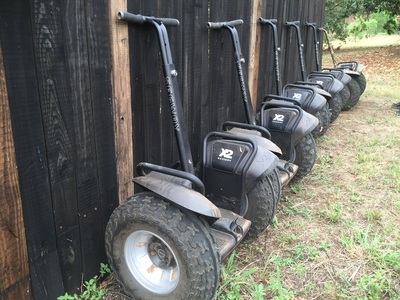


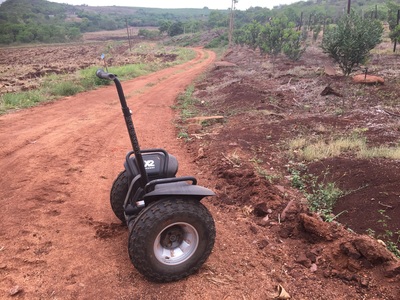

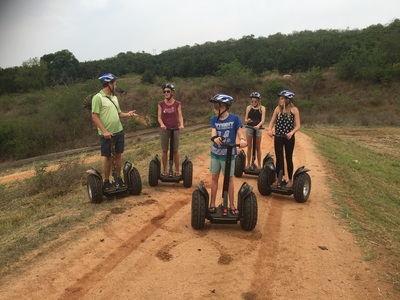
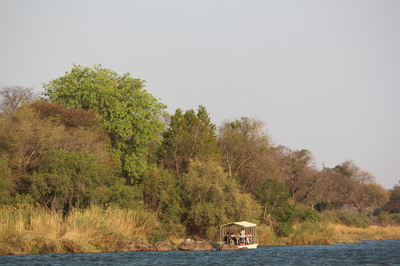

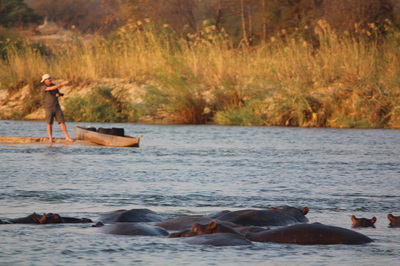
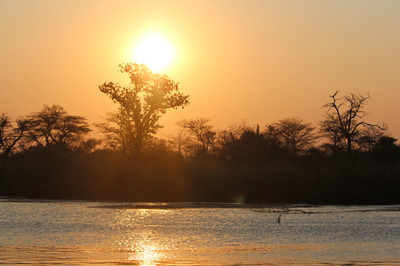
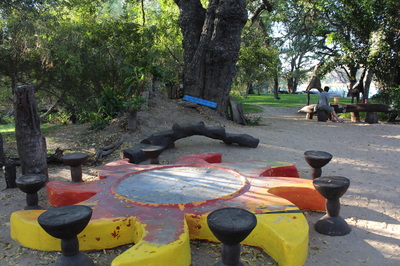
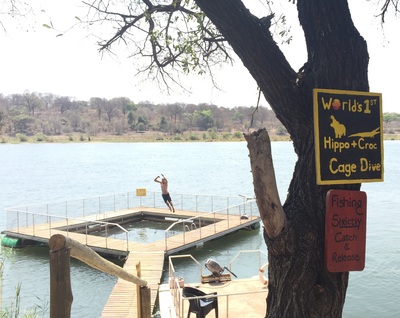



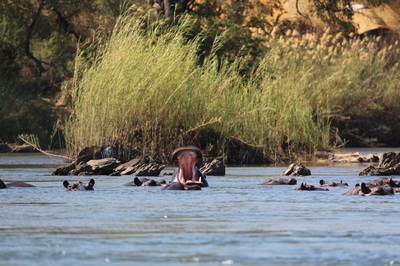
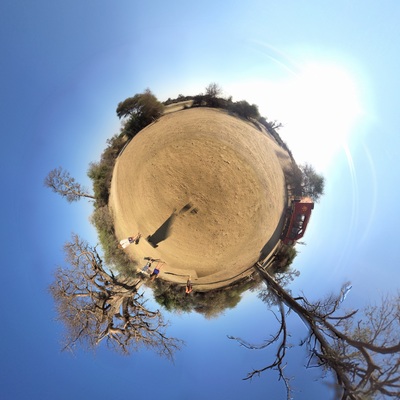
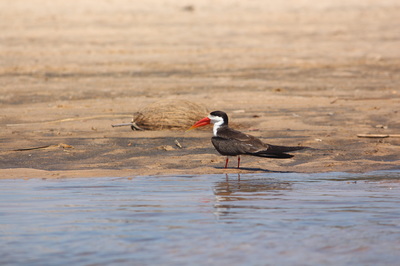

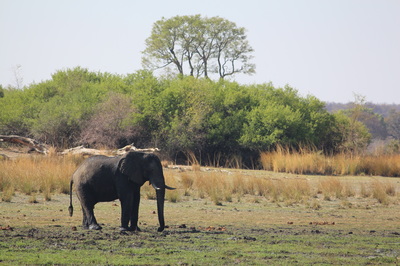

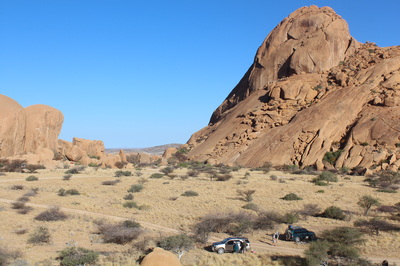


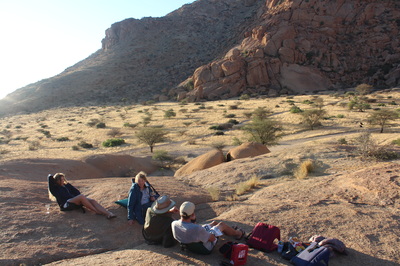


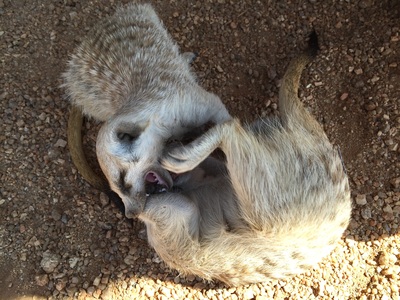
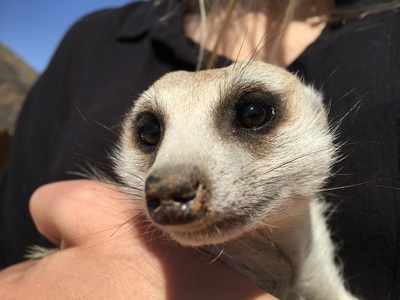


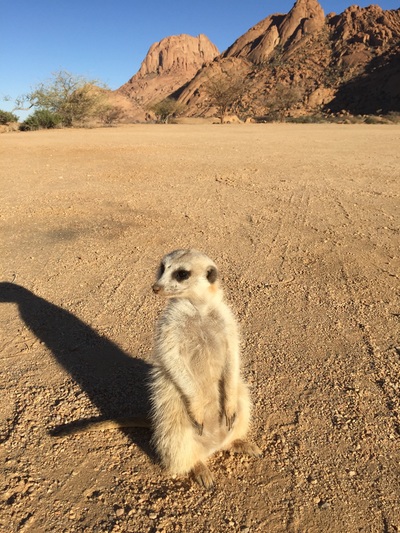
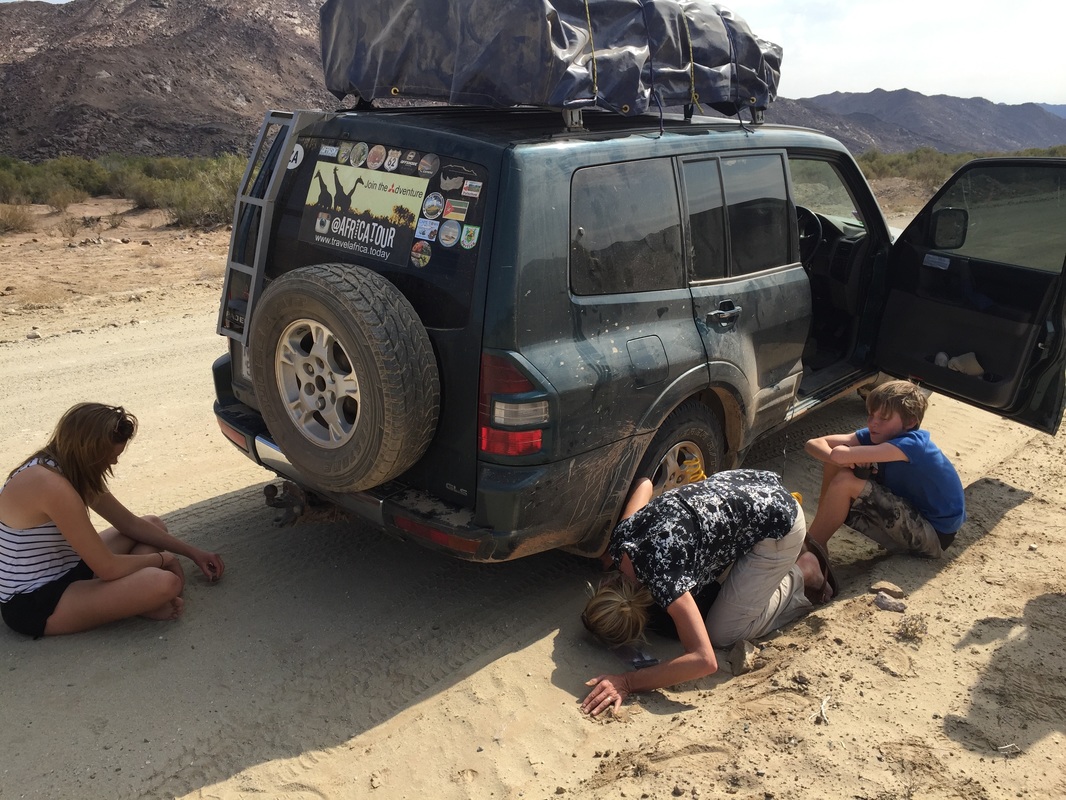
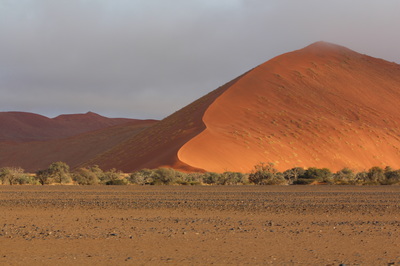
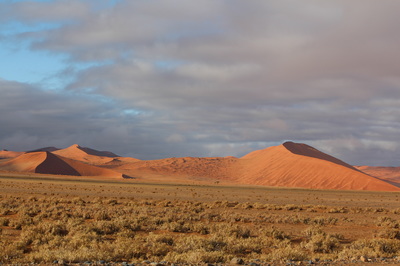
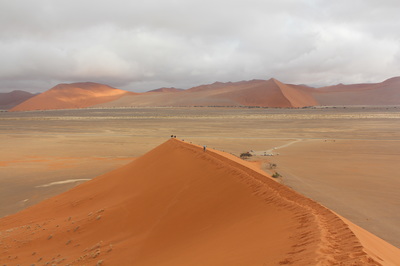

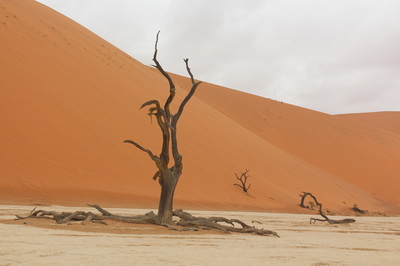

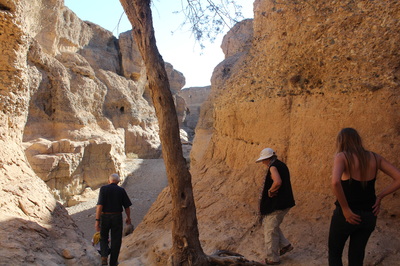

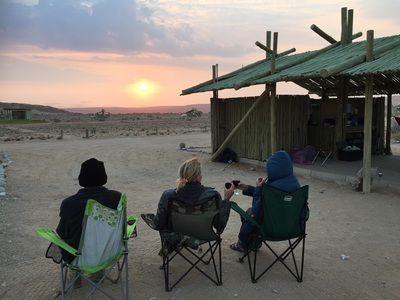

 RSS Feed
RSS Feed
